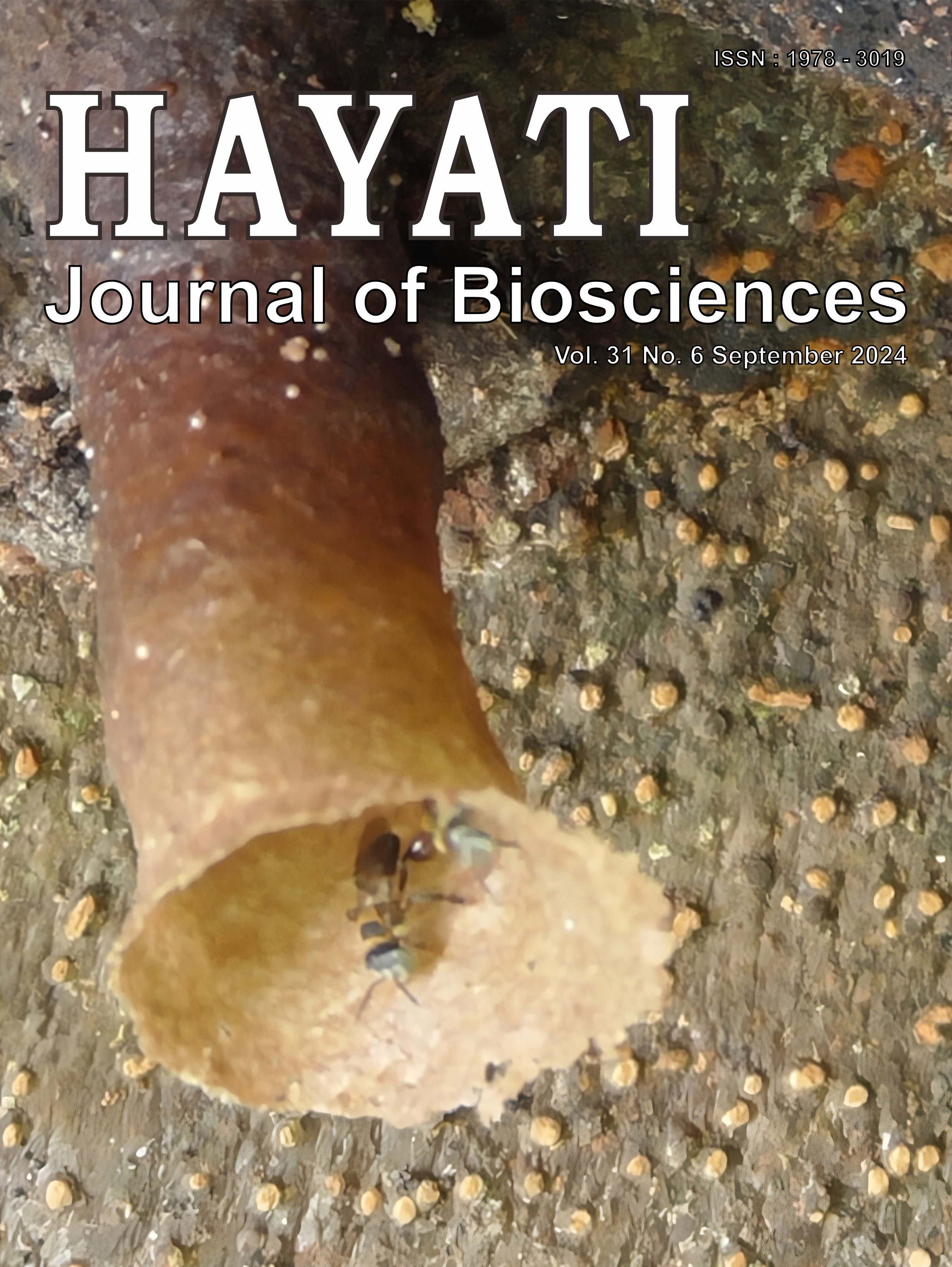Water Monitor Lizard (Varanus salvator) Skin Microstructure: Histochemical and Morphometrical Studies of Fiber Type Characteristics (Histochemistry Fiber Skin Water Monitor)
Abstract
Global demand for the water monitor’s skin, Varanus salvator, has made it a valuable wildlife commodity. Leathercraft manufacturing must consider not only beauty but also the strength and flexibility of the leather, which is determined by its structure in the skin. Therefore, this study analyzed and evaluated the fiber type characteristic of the water monitor’s skin. Skin samples were collected from 10 Sumatra water monitors with a Snout-Vent Length size of 39-89 cm and were divided into small (39-59 cm) and large (60-89 cm) groups. The skins from the dorsocervical, lumbosacral, and ventral regions were proceeded for histological sections. Histochemical approaches utilized were Hematoxylin Eosin, Picrosirius Red, and Elastin Verhoeff’s Hematoxylin staining methods. Thick fibers are the main component in the skin, ranging from 69-73%, respectively, while thin fibers varied greatly and were observed predominantly in the reticular dermis. Fiber size in the reticular dermis of small lizards was lower than that of larger ones. Elastic fibers were observed abundantly at the border of the reticular dermis and subcutaneous layer in both small and large lizards. Moreover, the skin of the small-sized lizard also has a lower morphometric than that of a large-sized lizard, both in thickness and fiber type percentage. Therefore, the skin of small-sized lizards was considered less tough than that of large-sized lizards.
Downloads
Copyright (c) 2024 Andhika Yudha Prawira, Ni Luh Putu Rischa Phadmacanty, Gono Semiadi, Hellen Kurniati, Wahyu Trilaksono, Yulianto, Nurhidayat, Srihadi Agungpriyono

This work is licensed under a Creative Commons Attribution-NonCommercial 4.0 International License.
HAYATI J Biosci is an open access journal and the article's license is CC-BY-NC. This license lets others distribute, remix, tweak, and build upon author's work, as long as they credit the original creation. Authors retain copyright and grant the journal/publisher non exclusive publishing rights with the work simultaneously licensed under a https://creativecommons.org/

























.png) IPB University
IPB University Department of Biology
Department of Biology The Indonesian Biological Society
The Indonesian Biological Society 

